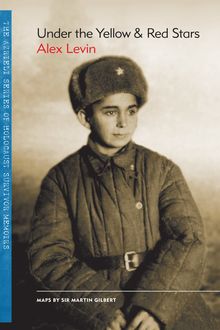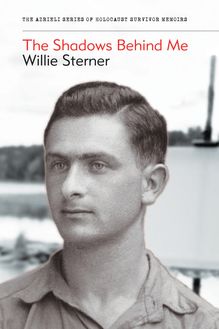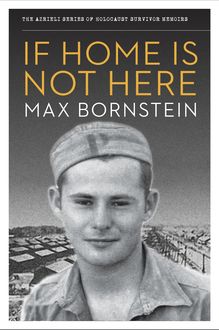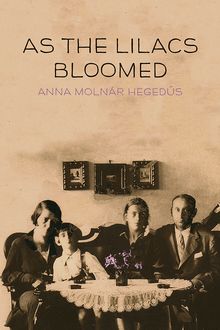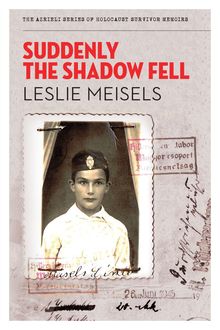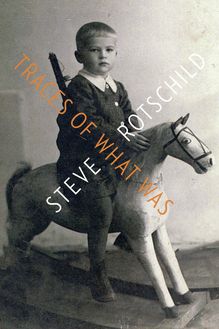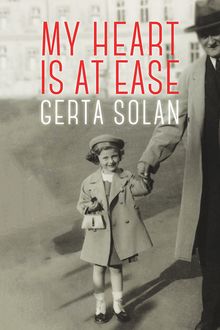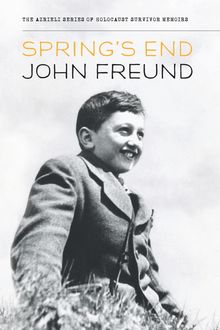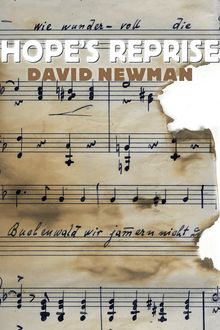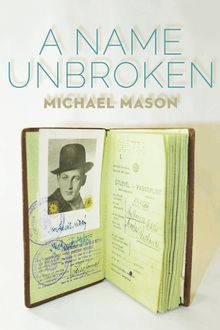-
 Univers
Univers
-
 Ebooks
Ebooks
-
 Livres audio
Livres audio
-
 Presse
Presse
-
 Podcasts
Podcasts
-
 BD
BD
-
 Documents
Documents
-
- Cours
- Révisions
- Ressources pédagogiques
- Sciences de l’éducation
- Manuels scolaires
- Langues
- Travaux de classe
- Annales de BEP
- Etudes supérieures
- Maternelle et primaire
- Fiches de lecture
- Orientation scolaire
- Méthodologie
- Corrigés de devoir
- Annales d’examens et concours
- Annales du bac
- Annales du brevet
- Rapports de stage
La lecture à portée de main
Vous pourrez modifier la taille du texte de cet ouvrage
Découvre YouScribe en t'inscrivant gratuitement
Je m'inscrisDécouvre YouScribe en t'inscrivant gratuitement
Je m'inscrisEn savoir plus
Vous pourrez modifier la taille du texte de cet ouvrage
En savoir plus

Description
Sujets
Informations
| Publié par | Azrieli Foundation |
| Date de parution | 01 septembre 2014 |
| Nombre de lectures | 4 |
| EAN13 | 9781897470817 |
| Langue | English |
| Poids de l'ouvrage | 2 Mo |
Informations légales : prix de location à la page 0,0300€. Cette information est donnée uniquement à titre indicatif conformément à la législation en vigueur.
Extrait
As the Lilacs Bloomed
Anna Molnár Hegedűs
First published as Miért? (Why?) in Romania, 1946.
TRANSLATED FROM HUNGARIAN BY MARIETTA MORRY AND LYNDA MUIR
The Azrieli Series of Holocaust Survivor Memoirs
Naomi Azrieli, Publisher
Jody Spiegel, Program Director
Arielle Berger, Managing Editor
Elizabeth Lasserre, Senior Editor, French-Language Editions
Aurélien Bonin, French-Language Educational Outreach and Events
Catherine Person, Quebec Educational Outreach and Events
Elin Beaumont, English-language Educational Outreach and Events
Tim MacKay, New Media and Marketing
Susan Roitman, Executive Assistant and Office Manager (Toronto)
Mary Mellas, Executive Assistant and Human Resources (Montreal)
Eric Bélisle, Administrative Assistant
Mark Goldstein, Art Director
François Blanc, Cartographer
Bruno Paradis, Layout, French-language editions
Contents
The Azrieli Series of Holocaust Survivor Memoirs
Series Preface: In their own words...
About the Glossary
Introduction
Dedication
Author’s Preface
Occupation
Eviction
The Ghetto
Exile
Internment
Life in Auschwitz
Schlesiersee
The Infirmary
The Schälküche
The Death March
Alone
Freedom
Waiting
Epilogue
Glossary
Photographs
Copyright
About the Azrieli Foundation
Also Available
Series Preface: In their own words...
In telling these stories, the writers have liberated themselves. For so many years we did not speak about it, even when we became free people living in a free society. Now, when at last we are writing about what happened to us in this dark period of history, knowing that our stories will be read and live on, it is possible for us to feel truly free. These unique historical documents put a face on what was lost, and allow readers to grasp the enormity of what happened to six million Jews – one story at a time.
David J. Azrieli , C.M., C.Q., M.Arch
Holocaust survivor and founder, The Azrieli Foundation
Since the end of World War II , over 30,000 Jewish Holocaust survivors have immigrated to Canada. Who they are, where they came from, what they experienced and how they built new lives for themselves and their families are important parts of our Canadian heritage. The Azrieli Foundation’s Holocaust Survivor Memoirs Program was established to preserve and share the memoirs written by those who survived the twentieth-century Nazi genocide of the Jews of Europe and later made their way to Canada. The program is guided by the conviction that each survivor of the Holocaust has a remarkable story to tell, and that such stories play an important role in education about tolerance and diversity.
Millions of individual stories are lost to us forever. By preserving the stories written by survivors and making them widely available to a broad audience, the Azrieli Foundation’s Holocaust Survivor Memoirs Program seeks to sustain the memory of all those who perished at the hands of hatred, abetted by indifference and apathy. The personal accounts of those who survived against all odds are as different as the people who wrote them, but all demonstrate the courage, strength, wit and luck that it took to prevail and survive in such terrible adversity. The memoirs are also moving tributes to people – strangers and friends – who risked their lives to help others, and who, through acts of kindness and decency in the darkest of moments, frequently helped the persecuted maintain faith in humanity and courage to endure. These accounts offer inspiration to all, as does the survivors’ desire to share their experiences so that new generations can learn from them.
The Holocaust Survivor Memoirs Program collects, archives and publishes these distinctive records and the print editions are available free of charge to libraries, educational institutions and Holocaust-education programs across Canada. They are also available for sale to the general public at bookstores. All revenues to the Azrieli Foundation from the sales of the Azrieli Series of Holocaust Survivor Memoirs go toward the publishing and educational work of the memoirs program.
The Azrieli Foundation would like to express appreciation to the following people for their invaluable efforts in producing this book: Sherry Dodson (Maracle Press), Sir Martin Gilbert, Steve Jobbitt, Barbara Kamieński, Farla Klaiman, Therese Parent, and Margie Wolfe and Emma Rodgers of Second Story Press.
About the Glossary
The following memoir contains a number of terms, concepts and historical references that may be unfamiliar to the reader. For information on major organizations; significant historical events and people; geographical locations; religious and cultural terms; and foreign-language words and expressions that will help give context and background to the events described in the text, please see the Glossary .
Introduction
The sweet smell of flowers, their intense colour and liveliness, are often cause to rejoice after the winter months, along with the rejuvenation of life. “In the wonderfully fair month of May,” wrote Heinrich Heine, “as all the flower-buds burst, then in my heart, love arose.” 1
“I am alive! The lilacs are in bloom again.” So writes Anna Molnár Heged ű s on May 1, 1945, just days after returning home to Szatmár, Hungary following horrifying experiences in the Nazi camps. “There was springtime last year as well,” she continues, “but we had no eyes for beauty. Our noses could only perceive the stench of human cruelty. Our lips forgot how to smile; our hearts ached.” Anna Molnár Heged ű s, like so many others, came to the end of the Holocaust alive but crushed in spirit. Wondering if the Nazis had succeeded in destroying humanity, she is nonetheless struck by the fact that the lilacs never stopped blooming, just as the cycle of the rising sun and moon were constantly in motion. Other people did not stop living, children did not cease being born and parents did not stop looking with wonder at their first smile. “I am alive,” Anna writes, “and I can take delight in this new spring.” But this return to life is conditional: If her loved ones do not return, she will feel “sentenced to life.”
Anna set her memoirs to paper in 1945, pouring them out in the months following liberation. Her memoir was originally published in Hungarian in 1946. Written without the hindsight and processing that characterizes most survivor memoirs, Anna plunges the reader into a harsh and unsettling present. The reader moves along with Anna, day after day, experiencing, as she did, the German invasion of Hungary in March 1944, the anti-Jewish decrees, the ghetto and the horror of the camps. On March 19, 1944, the start of the occupation, Anna Heged ű s was forty-seven years old and staying in a spa-hotel in Budapest for treatment for her sciatica. The news of the occupation left her in shock, and Anna eloquently shares this bewilderment with the reader. When Anna returns to Szatmár, her story of survival begins: the anxieties and ideas for escape, the concern for her family, the imprisonment in the ghetto and deportation to Auschwitz-Birkenau, the transfer to Schlesiersee labour camp, the “death march,” the liberation and the anticipation of the return of her family. Ending her narrative at this point, Anna is not an all-knowing storyteller; the end is unresolved, as it was for her at the time. This anxiety of “not-knowing” the ending of her story embraces the reader as well.
Anna Heged ű s was born in 1897 in a city called Satmar in Yiddish, Satu Mare in Romanian and Szatmárnémeti in Hungarian. Anna was the youngest daughter of Henrik Molnár and Fanny Moskovits. She had two brothers, Lászlo and Ödön , and three sisters, Margit (who died before the war), Iren and Erzsike . She married Zoltán Heged ű s in 1921 and two years later their daughter, Ágnes, was born, followed by their son, János, in 1927 .
Szatmár, situated in north Transylvania, was the largest city in Satu Mare County and was founded in the twelfth century by German settlers. The first evidence of the presence of Jews in the city is from 1698, and from then on many Jews resided there, suffering over the years from various restrictions regarding their rights to settlement and trade. Nonetheless, a Jewish community was established and by 1941, the year of the last national Hungarian census held before the German occupation, 12,960 Jews lived there, comprising a quarter of its population. Most of them were traders and craftsmen, but there were also factory owners – Anna’s husband managed a lumber-processing factory – and farmers who employed mainly Jewish workers. The city had two Jewish schools, a parochial primary Talmud Torah school, a yeshiva and various religious and social organizations, and was comprised of an Orthodox community and a “status quo,” or independent, community. According to a census taken after the German occupation, on the second week of April 1944, about 12,000 Jews belonged to the Orthodox community and about 750 belonged to the “status quo” community. At the end of the nineteenth century, the Orthodox community became central to the Hasidic movement in Hungary when Rabbi Joel Teitelbaum founded and established the Satmar sect. Zionism, and particularly religious Zionism, took hold as a moveme
-
 Univers
Univers
-
 Ebooks
Ebooks
-
 Livres audio
Livres audio
-
 Presse
Presse
-
 Podcasts
Podcasts
-
 BD
BD
-
 Documents
Documents
-
Jeunesse
-
Littérature
-
Ressources professionnelles
-
Santé et bien-être
-
Savoirs
-
Education
-
Loisirs et hobbies
-
Art, musique et cinéma
-
Actualité et débat de société
-
Jeunesse
-
Littérature
-
Ressources professionnelles
-
Santé et bien-être
-
Savoirs
-
Education
-
Loisirs et hobbies
-
Art, musique et cinéma
-
Actualité et débat de société
-
Actualités
-
Lifestyle
-
Presse jeunesse
-
Presse professionnelle
-
Pratique
-
Presse sportive
-
Presse internationale
-
Culture & Médias
-
Action et Aventures
-
Science-fiction et Fantasy
-
Société
-
Jeunesse
-
Littérature
-
Ressources professionnelles
-
Santé et bien-être
-
Savoirs
-
Education
-
Loisirs et hobbies
-
Art, musique et cinéma
-
Actualité et débat de société
- Cours
- Révisions
- Ressources pédagogiques
- Sciences de l’éducation
- Manuels scolaires
- Langues
- Travaux de classe
- Annales de BEP
- Etudes supérieures
- Maternelle et primaire
- Fiches de lecture
- Orientation scolaire
- Méthodologie
- Corrigés de devoir
- Annales d’examens et concours
- Annales du bac
- Annales du brevet
- Rapports de stage

